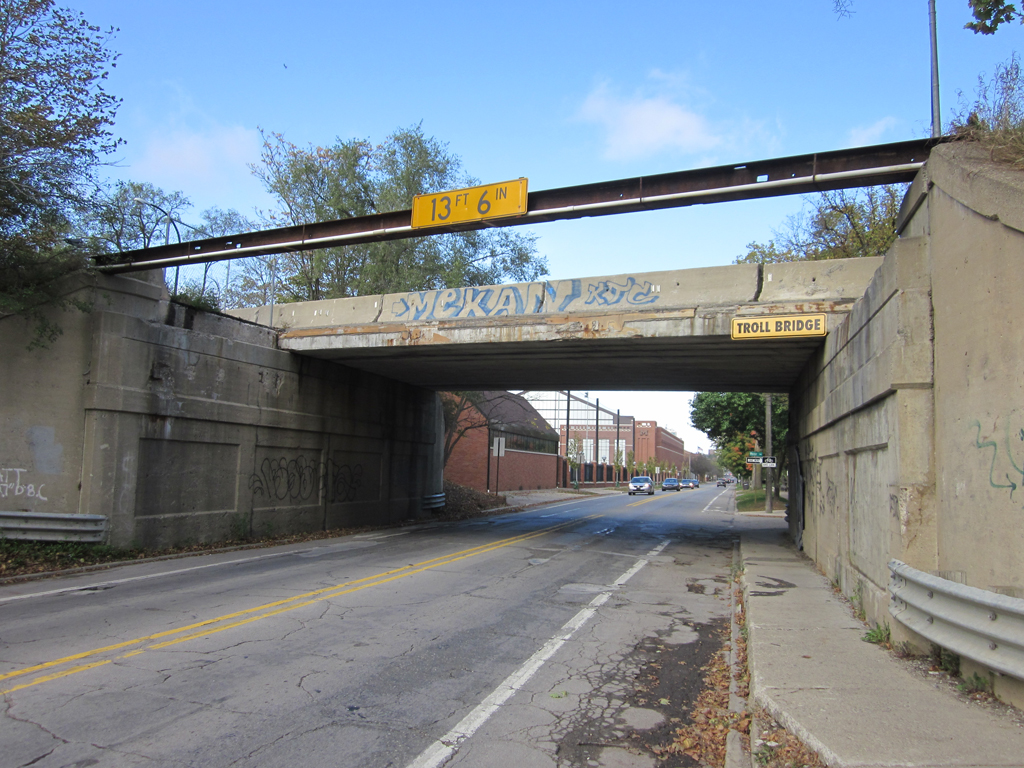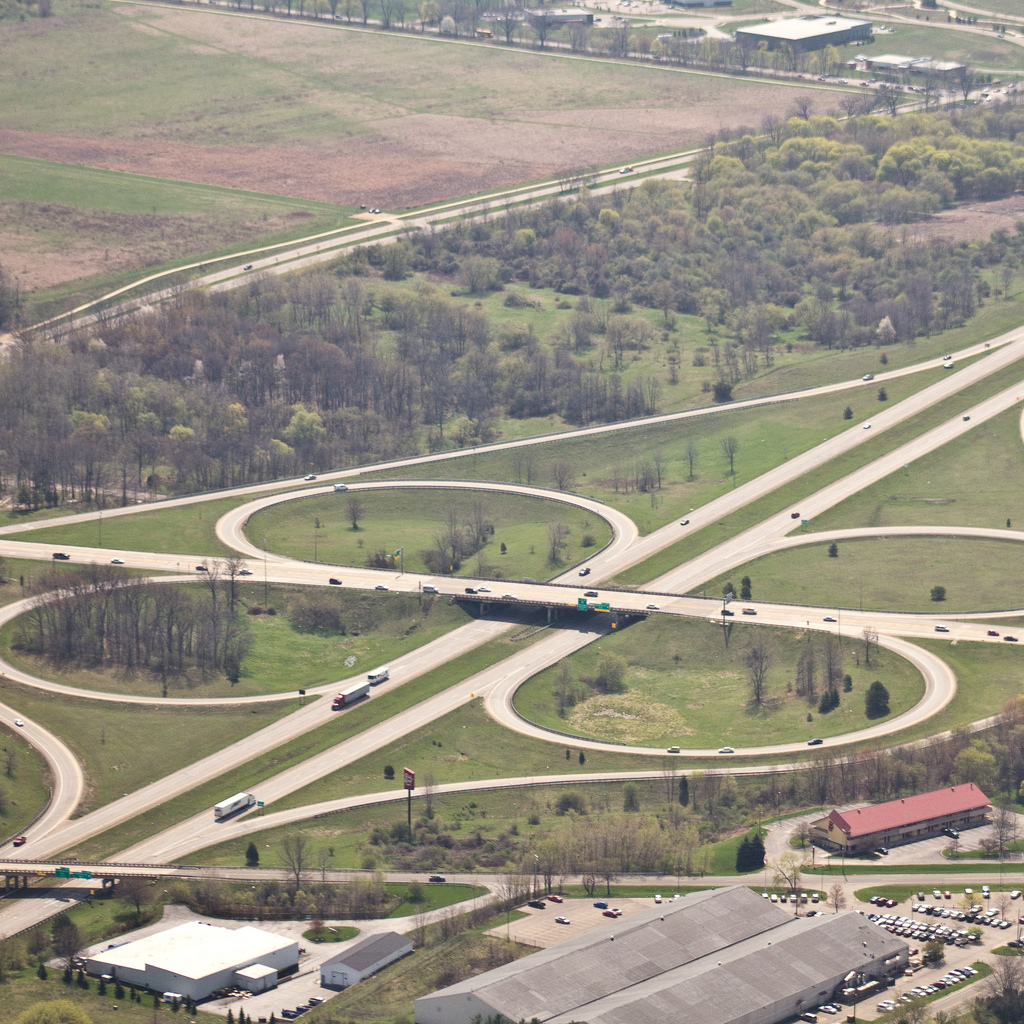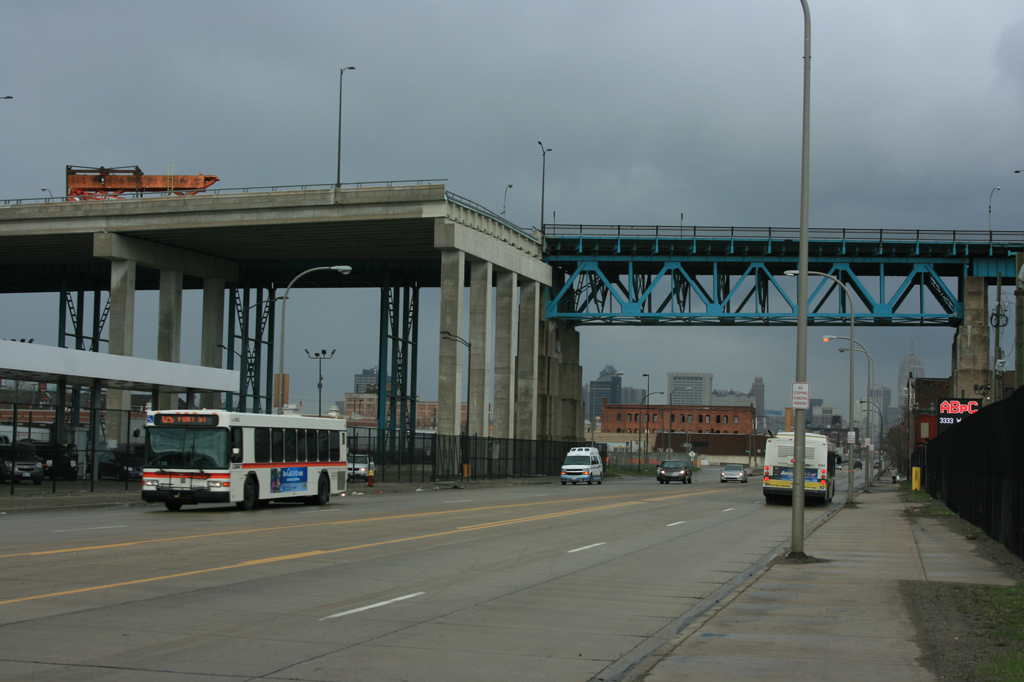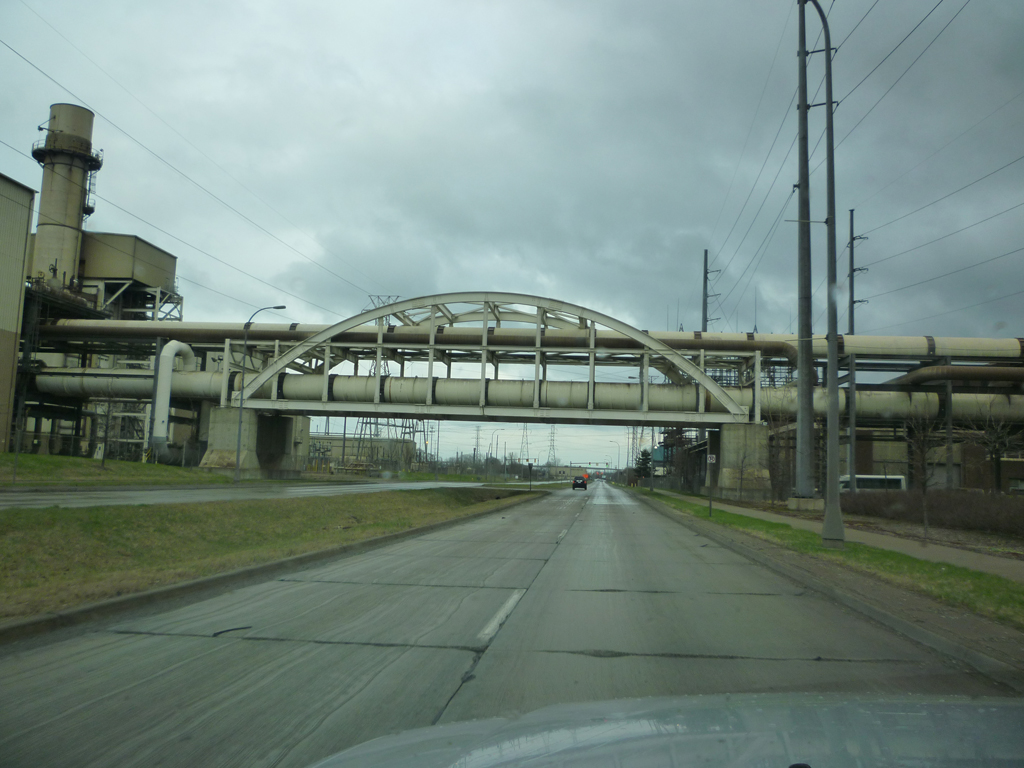
Photo Credit: Karl Jansen
This is the infamous Stadium Blvd Bridge in Ann Arbor, MI. For the past several years, this bridge has literally been falling down, waiting on funds for a rehabilitation project. What you see on the near side of the bridge is an exposed beam, which used to be the south side of the bridge. Last year, the south half of the bridge was removed for public safety reason, because officials were worried “football size” chunks of concrete would fall on a car or pedestrian. This fall, the City of Ann Arbor with its secured funding will finally undertake this long overdue project.







